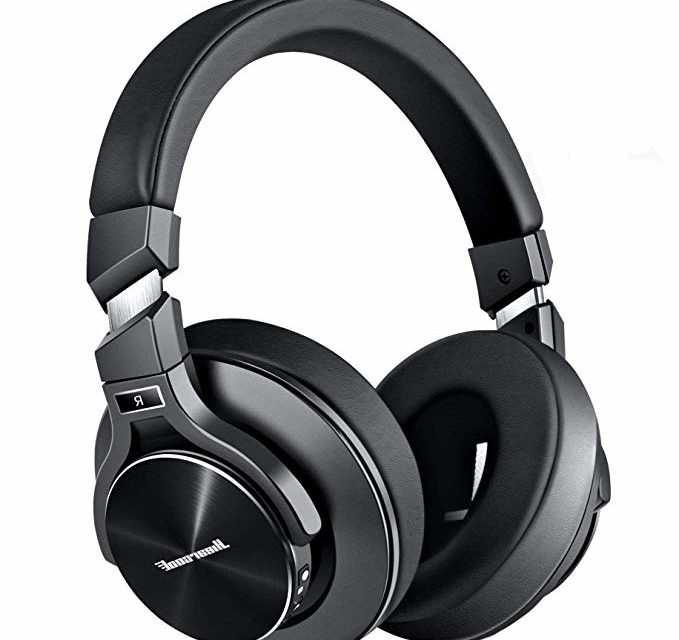Wireless Headphones: Finding The Perfect Upgrade

Table of Contents
Sound Quality: The Heart of Your Listening Experience
The most crucial aspect of any headphone purchase is sound quality. Let's delve into the key elements that contribute to an exceptional listening experience.
Understanding Audio Drivers and Frequency Response
The audio driver is the heart of your wireless headphones, responsible for converting electrical signals into sound waves. Larger drivers generally produce richer bass, while smaller drivers offer better detail in the higher frequencies. Different driver types, such as dynamic and planar magnetic, also impact sound signature. Dynamic drivers are the most common, offering a good balance of detail and bass. Planar magnetic drivers, however, are known for their exceptional clarity and detail, but often come with a higher price tag.
Frequency response, measured in kilohertz (kHz), indicates the range of frequencies the headphones can reproduce. A wider frequency response range (e.g., 20Hz-20kHz) generally translates to a more balanced sound, with accurate representation of bass, mids, and treble.
- kHz: Represents the range of audible frequencies.
- Balanced Audio: Accurate representation across the frequency spectrum.
- High-Fidelity: High-quality audio reproduction with minimal distortion.
Noise Cancellation Technology
Active Noise Cancellation (ANC) is a game-changer for wireless headphones, significantly reducing ambient noise and allowing you to focus on your audio. ANC headphones use microphones to detect external sounds and generate inverse sound waves to cancel them out. The effectiveness of ANC varies greatly depending on the headphones and the environment. Some headphones offer hybrid ANC, combining feedforward and feedback microphones for superior noise reduction.
- Examples of ANC Headphones: Bose QuietComfort, Sony WH-1000XM5, Apple AirPods Max (each with varying strengths and weaknesses).
- Hybrid ANC: Combines feedforward and feedback microphones for improved noise cancellation.
Codec Support for Superior Audio Streaming
Codecs are algorithms that compress and decompress audio data for wireless transmission. Different codecs offer varying levels of compression and fidelity. aptX, AAC, and SBC are common codecs used in wireless headphones. aptX generally provides higher-quality audio than AAC, which in turn is better than SBC. Ensuring compatibility between your headphones and source device (smartphone, computer, etc.) is crucial for optimal sound quality.
- aptX: High-quality audio codec with low latency.
- AAC: Apple's preferred codec, offering good sound quality.
- SBC: Standard Bluetooth codec, offering acceptable sound but lower quality than aptX or AAC.
Comfort and Fit: All-Day Listening Without the Ache
Comfort is paramount, especially during extended listening sessions. The right fit ensures a pleasant experience and prevents fatigue.
Earbud vs. Over-Ear: Choosing the Right Style
The choice between earbuds (in-ear and true wireless) and over-ear headphones depends largely on personal preference and intended use. Earbuds are more portable and less noticeable, but may not offer the same level of sound isolation or comfort for prolonged use. Over-ear headphones provide better sound isolation and comfort, but are less portable.
- Considerations for different ear shapes and sizes: Look for headphones with various ear tip sizes or adjustable earcups.
Headband and Earcup Materials for Enhanced Comfort
The materials used in the headband and earcups significantly impact comfort. Memory foam earcups provide excellent cushioning and conform to the shape of your ears. Breathable fabrics prevent overheating, while high-quality leather offers a luxurious feel. Adjustability is also essential, allowing you to fine-tune the fit for optimal comfort.
- Examples of comfortable materials: Memory foam, breathable fabrics (like mesh), plush leather.
- Brands known for comfort: Bose, Sony, Audio-Technica (often cited for their comfortable designs).
Features and Functionality: Beyond the Basics
Beyond sound quality and comfort, various features enhance the overall user experience.
Battery Life and Charging
Battery life is a critical consideration. Longer battery life is essential for travel or extended use. Look for headphones with fast-charging capabilities and clear battery life indicators.
- Battery life ranges: Vary greatly from a few hours to over 30 hours depending on the model and features used.
- Charging methods: USB-C is becoming increasingly common, along with wireless charging options.
Connectivity and Bluetooth Versions
Stable Bluetooth connectivity is essential for a seamless listening experience. Newer Bluetooth versions (e.g., Bluetooth 5.0 and above) generally offer improved range, lower latency, and better power efficiency. Multipoint pairing allows you to connect to multiple devices simultaneously.
- Advantages of newer Bluetooth versions: Lower latency (reduced delay between audio and video), improved range, and better power efficiency.
Water Resistance and Durability
Water resistance is a crucial factor if you plan to use your wireless headphones during workouts or outdoor activities. IPX ratings indicate the level of water resistance. Durable materials ensure longevity and withstand daily wear and tear.
- IPX ratings: Indicate the level of water resistance (e.g., IPX4 for splash resistance, IPX7 for submersion).
- Examples of water-resistant and durable headphones: Many sports-oriented wireless headphones offer high IPX ratings and durable construction.
Budget and Value: Finding the Sweet Spot
Wireless headphones are available at a wide range of prices. Factors influencing cost include driver quality, ANC technology, features, and brand reputation.
- Price points: Budget-friendly options are available under $100, while premium headphones can cost several hundred dollars.
- Examples of headphones in different price brackets: Numerous brands offer options at various price points; research is key to finding the best value.
Finding the perfect balance between features and price is essential. Don't necessarily opt for the most expensive option unless its features justify the cost.
Conclusion
Selecting the perfect wireless headphones involves considering several interconnected factors: sound quality (drivers, frequency response, ANC, codecs), comfort (fit, materials), features (battery life, Bluetooth version, water resistance), and budget. Matching your individual needs and preferences to the right pair is crucial for a truly enjoyable listening experience. Start your search for the perfect wireless headphone upgrade today! Explore the various options available and find the one that best fits your lifestyle and listening preferences. Don't settle for less than the best listening experience – upgrade to wireless headphones now!

Featured Posts
-
 Exploring Paulina Gretzkys Life Wife Of Dustin Johnson Mother And Career
May 21, 2025
Exploring Paulina Gretzkys Life Wife Of Dustin Johnson Mother And Career
May 21, 2025 -
 The Unfolding Drama Walliams And Cowells Britains Got Talent Conflict
May 21, 2025
The Unfolding Drama Walliams And Cowells Britains Got Talent Conflict
May 21, 2025 -
 Chennai Wtt Star Contender India Sets New Record With 19 Paddlers
May 21, 2025
Chennai Wtt Star Contender India Sets New Record With 19 Paddlers
May 21, 2025 -
 Increased Funding Dubai Holdings Reit Ipo Now At 584 Million
May 21, 2025
Increased Funding Dubai Holdings Reit Ipo Now At 584 Million
May 21, 2025 -
 The Goldbergs Comparing The Show To Real 80s Family Life
May 21, 2025
The Goldbergs Comparing The Show To Real 80s Family Life
May 21, 2025
